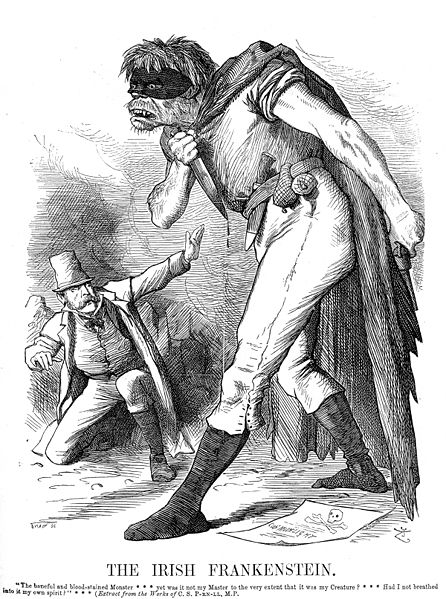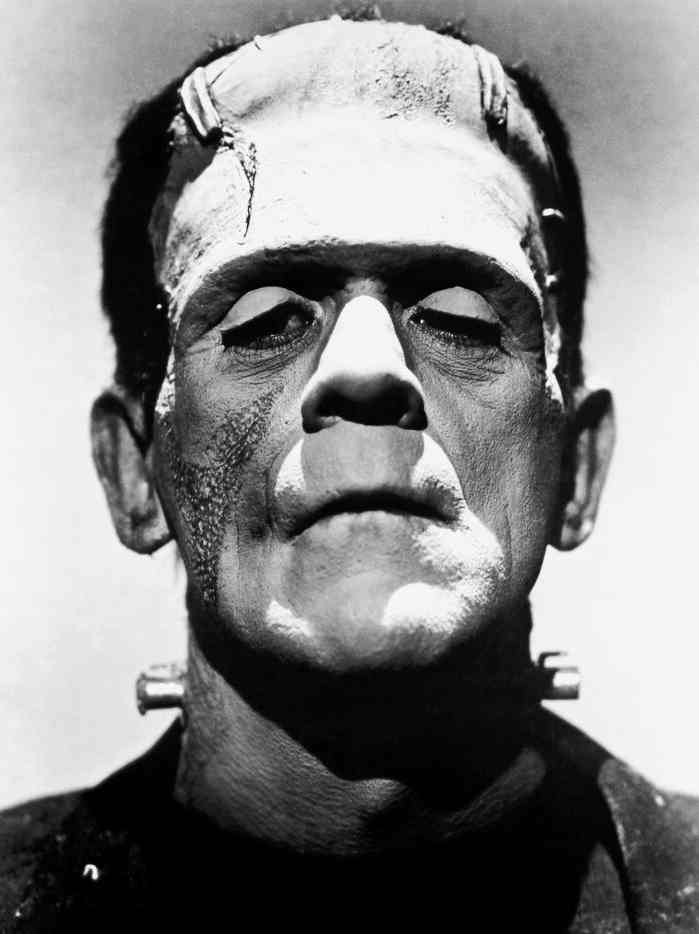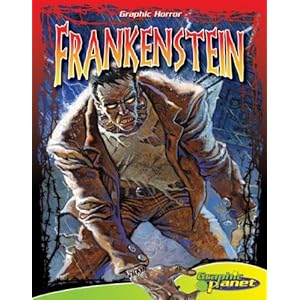![[frankenstein.jpg]](https://blogger.googleusercontent.com/img/b/R29vZ2xl/AVvXsEi6roElz_DrYvedHA9QqcgmU18GZ6Z1H4covNC8gqTqQHyfbxtFl_hLVtDGKEtR5UibJGulZRKoSyuKtIEP_2KzGYPyVASvPDmQCA8Dww4vcdvqJiyzRktveJwoZpNrnMAA5W0lK49IPnms/s640/frankenstein.jpg)
On October 7th Yara Wilson reviewed the book Frankenstein by Mary Shelley for the R.E.A.D. Book Group. The review and the discussion afterward were enjoyed by all who attended.
Frankenstein is the perfect spooky read for the month of October. It was first published in 1818 and has been in print ever since. This classic story tells of the epic battle between man and monster as it reaches its greatest pitch. In trying to create life, the young student Victor Frankenstein unleashes forces beyond his control, setting into motion a long and tragic chain of events that brings Victor himself to the very brink. How he tries to destroy his creation, as it destroys everything Victor loves, is a powerful story of love, friendship …and horror.
The subtitle to Frankenstein is The Modern Promethius. In Greek mythology, Promethius is a Titan who became a hero to humankind because he stole fire from the gods and gave it to men.
The subtitle to Frankenstein is The Modern Promethius. In Greek mythology, Promethius is a Titan who became a hero to humankind because he stole fire from the gods and gave it to men.
The author of Frankenstein, Mary Wollstonecraft Shelley, lived a very interesting and tragic life.
Her father was the political philosopher William Godwin, and her mother was the philosopher and feminist Mary Wollstonecraft. Her mother died from giving birth to her. She and her older half-sister, Fanny, were raised by their father. He father never fully forgave Mary for causing her mother's death. When Mary was four, her father married his neighbor, Mary Jane Clairmont. He provided his daughter with a rich, if informal, education, encouraging her to adhere to his liberal political theories. In 1814, Mary Godwin began a romantic relationship with one of her father’s political followers, the married Percy Bysshe Shelley who was also a poet. Together with Mary's stepsister, Claire, they left for France and travelled through Europe; upon their return to England, Mary was pregnant with Percy's child. Over the next two years, she and Percy faced ostracism, constant debt, and the death of their prematurely born daughter. They married in late 1816 after the suicide of Percy Shelley's first wife, Harriet.
Mary Wollstonecraft Shelley began writing Frankenstein when she was 18 years old. In 1816 she and her husband, Percy Shelley, spent much time with Lord Byron in Geneva, Switzerland. During the course of their socializing, the suggestion arose that they should each write a ghost story. That is when Mary created the story of Frankenstein. Everyone was so impressed with this tale and they encouraged her to turn it into a full length novel.
Frankenstein was written at the time of scientific discovery. Priestly had discovered oxygen, a vital element of life. Galvani had discovered electricity, the vital spark of life. It was a time when it was felt that the peeling back of a few more layers would uncover the source of life itself. Shelley and Byron discussed 'the principle of life and whether there was any probability of it's ever being discovered'.
The Shelleys left Britain in 1818 for Italy, where their second and third children died before Mary Shelley gave birth to her last and only surviving child, Percy Florence. In 1822, her husband drowned when his sailing boat sank during a storm in the Bay of La Spezia. A year later, Mary Shelley returned to England and from then on devoted herself to the upbringing of her son and a career as a professional author. The last decade of her life was dogged by illness, probably caused by the brain tumour that was to kill her at the age of 53.

The Shelleys left Britain in 1818 for Italy, where their second and third children died before Mary Shelley gave birth to her last and only surviving child, Percy Florence. In 1822, her husband drowned when his sailing boat sank during a storm in the Bay of La Spezia. A year later, Mary Shelley returned to England and from then on devoted herself to the upbringing of her son and a career as a professional author. The last decade of her life was dogged by illness, probably caused by the brain tumour that was to kill her at the age of 53.

Frankenstein's Monster was the result of medical experimentation by Victor Frankenstein, 'a pale student of unhallowed arts', that went badly wrong, using stolen body parts. Frankenstein has become the byword for any monster, especially something artificially created, out of control. It has stood the test of time as a modern parable that man should not attempt to play God, and should he try, his creations will turn upon him.
Frankenstein's monster has undergone a big transformation over the years.
This is one of the first visual depictions of the monster:
This is how he is depicted in many of the movie versions.
 |
Anti-Irish propaganda from Punch magazine, published in May 1882. Mary Shelley's novel Frankenstein, and the famous character of Frankenstein's monster have influenced popular culture for at least 100 years. The work has inspired numerous films, television programs, video games and derivative works. The character of the monster remains one of the most recognized icons in horror fiction. |
You might like to watch the 1910 movie version of Frankenstein which was made by Edison Studios.
Along with movies, there are many books that feature the monster or the mythology.
Many artists have come up with their own depictions of Frankenstein such as this illustration by Marek Oleksicki in his graphic novel titled Frankenstein's Womb.
This Dean Koontz series is very popular at the library. The third one in the series, Dead and Alive, is set in New Orleans and was slated to be released right after Hurricane Katrina. The publication was delayed until the summer of 2009, which frustrated a lot of loyal Frankenstein fans.
Graphic novels such as Frankenstein by Elizabeth Genco are based on the novel by Mary Shelley. Young horror fans will enjoy the graphic (not gory) renditions in this one.
There are even picture books about Frankenstein such as this one titled Frankenstein Makes a Sandwich by Adam Rex.
If you plan to read Frankenstein it is helpful to know -
The primary narrator is Robert Walton, who, in his letters, quotes Victor Frankenstein’s first-person narrative at length; Victor, in turn, quotes the monster’s first-person narrative; in addition, the lesser characters Elizabeth Lavenza and Alphonse Frankenstein narrate parts of the story through their letters to Victor.The point of view shifts with the narration, from Robert Walton to Victor Frankenstein to Frankenstein’s monster, then back to Walton. The shifts are not always clear but if you are aware of this it's pretty easy to figure out.
The monster is often referred to as the Demon in the book. Frankenstein is actually Victor Frankenstein, his creator.
Discussion Questions to enhance your reading -
Is Robert Walton's ambition similar to Frankenstein's, as Frankenstein believes?
Why is the fifteen-year-old Frankenstein so impressed with the oak tree destroyed by lightning in a thunderstorm?
Why does Frankenstein become obsessed with creating life?
Why is Frankenstein filled with disgust, calling the monster "my enemy," as soon as he has created him? (p. 62)
What does the monster think his creator owes him? What do you think his responsibilities to the monster are?
Why does Frankenstein agree to create a bride for the monster, then procrastinate and finally break his promise?
Why can't Frankenstein tell anyone—even his father or Elizabeth—why he blames himself for the deaths of William, Justine, and Henry Clerval?
Why doesn't Frankenstein realize that the monster's pledge "I shall be with you on your wedding-night" threatens Elizabeth as well as himself? (p. 173)
Why does Frankenstein find new purpose in life when he decides to seek revenge on the monster "until he or I shall perish in mortal conflict"? (p. 206)
Why are Frankenstein and his monster both ultimately miserable, bereft of human companionship, and obsessed with revenge? Are they in the same situation at the end of the novel?
Why doesn't Walton kill the monster when he has the chance?
For Further Reflection
Was it wrong for Frankenstein to inquire into the origins of life?
What makes the creature a monster rather than a human being?
Is the monster, who can be persuasive, always telling the truth?
Who is the actual monster in Frankenstein?
Frankenstein has many elements of a horror story. What strategies and devices does Shelley use to make the story scary? How does Shelley go beyond the usual horror story elements to focus on characters and the differences between their behaviors, beliefs and values?
One of the novel's tragedies is the inability of characters to recognize the humanity of the creature. What qualities make us human? Which of these qualities does the creature possess? What qualities does he not have?
Scholars sometimes use Frankenstein as an argument against scientific technology that creates life forms; others argue that it is not technology itself but the use to which it is put that presents an ethical problem. What is Shelley's position? What is your position?
Explain the novel's popularity. What makes the novel a classic? How is the story appropriate for today and our society?








interesting
ReplyDeleteI think Frankenstein is a great choice for reading during October.
ReplyDelete